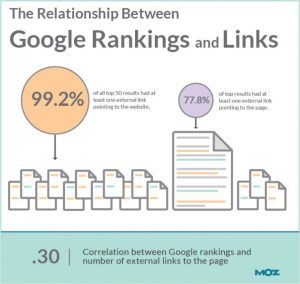We’re all tired of harping on the negatives of 2020 (because well, there are tons, and it’s all still fresh). But it turns out, the tumultuous year brought us some positives, too.
It’s a year that showed us opportunity. The opportunity to be more intentional with your time. To start your hobby. Build a fort with your kids. Or, to bake the scrumptious loaf of sourdough bread (apparently, everyone needed some comfort food).
And in business, 2020 taught us that maturing your digital operations is crucial to your business continuity plan. After scrambling to adapt to unthinkable obstacles, business leaders lived through the challenges of operating with outdated technology, siloed systems, and tired processes.
Shackled by legacy technology, leaders found teams plagued with low productivity and inflexibility. As a byproduct, now 90% of C-Suite leaders plan to mature their digital business strategies.
But, jarring statistics on digital transformation show us, failing at large-scale digital projects can be draining to team productivity and profits, too.
Planned spending on digital transformation technology will reach more than $ 2.3 trillion in the year 2023 alone. And collectively, from 2020 through 2023, leaders will pour more than $ 6.8 trillion into overhauling their technology and processes.
But, for every $ 1 billion invested in new technology, $ 112 million is lost to projects that fail.
That means by 2023, companies across the globe will have wasted a collective $ 761 billion on failed technology transformations in only four years’ time.
So, as company execs accelerate digital transformation, how can you support them?
In recent years, digital transformation has fallen out of the laps of middle managers, directors and VPs and onto the shoulders of CEOs.
When investments don’t start at the top, decisions get siloed. Silos cause piecemeal-ed systems and disjointed processes, toppling transformation efforts.
And while your C-Suite leaders now lead the charge to transform your business operations for the better, you sit in a unique position.
A company’s CEO is privy to the 100-foot view of how the business works. But that 100-foot view doesn’t give them the intimate details. They lack the frontline knowledge they need for successful change. Turns out, poor project coordination and communication is behind 80% of project failures. That’s where you come in.
You act as a bridge for word to travel from your frontline employees to executives. You’re crucial to make successful changes in your contact center and your company. In fact, you’re the reason for 97% of transformation success stories.
Digital transformation starts at the top with sound investments to change your processes, technology, and the way you work. Without executive sponsorship, your projects will never get off the ground. And without your input, the whopping majority of efforts will flop.
As you think up new projects to transform productivity and customer experience, check in with your company leaders to keep the momentum moving.
Learn the roles your executives play (and how you fit into the mix.) The more knowledge about digital transformation, the better the outcome for your contact center and your company.
The CEO: Seeing digital transformation opportunities from a unique vantage point
The CEO has the ultimate vantage point for cross-functional work, so it makes sense they carry digital transformation projects on their shoulders. They know the goals, functions, and outputs of each department. And, they’re connected to all the other C-Suiters.
Every major project comes across their desk for a signature. Your digital transformation efforts are no different.
Here, they play a supporting role.
Your CEO’s co-execs will task their teams with finding new technology. And, they’ll play a strategic role in rewriting processes and setting operational goals. Then, they’ll be instrumental in implementing any new systems.
CEOs should ask the tough questions to make sure the strategy and new processes align with your company’s long-term mission and vision.
“Visionary CEOs, individually, are the engines of massive change that is unprecedented in the history of information technology—possibly unprecedented in the history of commerce,” said Thomas M. Siebel for McKinsey & Company.
Once they have complete alignment with other company leaders, they can get buy-in from the board.
Setting a company up for sustainable growth and overhauling the way everyone works is no easy feat. They’ll need a compelling story for change, a strategy, and the support of advisors and company stakeholders to move forward.
“The threat is existential. For boards, if this (digital transformation) isn’t on your agenda, then you’ve got the wrong agenda. If your CEO isn’t talking about how to ensure the survival of the enterprise amid digital disruption, well, maybe you’ve got the wrong person in the job. This may sound extreme, but it’s not.”
For the CEO, it’s important to present the story, outline transformation goals, and show the expected ROI to get buy-in all around. And to build out their story for change, they’ll need help and suggestions from the frontline. That’s where you and your team come in.
The CIO: Offering subject matter expertise
Companies falling behind in digital transformation are being crushed by technical debt and monolithic systems.
More than 60% of senior IT pros think their CIOs are too busy maintaining current systems to innovate. When more than half of an executive’s time is dedicated to keeping the status quo, your company can’t progress at a sustainable pace.
To get rid of the baggage that comes with outdated tech, CIOs are taking more authority in digital transformation efforts. That’s why 70% of all companies plan to ramp up the use of digital technologies to improve business processes, customer engagement and employee productivity by 2022.
Technology is taking center stage as a vehicle to reach company-wide goals. And, 95% of CIOs think cybersecurity threats will only get worse. With these initiatives heading to the top of priority lists, CIOs are taking on a more strategic role. They have the knowledge needed to scope out scalable, secure platforms and raise their company’s digital IQ.
They’re the subject matter experts on digitalization across your company and your contact center. They know what systems you have, which ones bring the most pain, and which platforms don’t play well with others.
They can use this knowledge to spur urgency for company-wide digital transformation. It’s their job to convince the other C-Suiters that digitalization is the catalyst for a better customer experience. And, it’s the only way to meet key business objectives.
For CIOs, it’s crucial to share a company’s technology story and hard facts with a company’s board, too.
CIOs can work with contact center managers and other leaders (like you) to identify pain points in processes and technologies.
Does your CRM integrate with your contact center platform? How about your ticketing system? And, when you need to make fast changes to your system, like changing a call route, do you need to tag in IT? Helping your boss and IT leaders find technology gaps lets you eliminate inefficiencies in your contact center. And, it frees up the time your IT team spends on routine maintenance.
Once CIOs see where inefficiencies live in the contact center, they can merge those facts with what they hear from other departments, too. Offering this expertise serves to support a CEO’s story for change. And, it gives the technical perspective board members need to drive efforts forward.
The COO: Bringing cohesivity and closing gaps
Nearly two-thirds of C-Suite execs, 62%, have set KPIs for their transformation efforts without knowing the gaps in their business, first.
COOs bridge how a company runs and how leaders work together to meet long-term goals.
When the CIO brings new tools and technical initiatives to the board room, COOs check them against your corporate ecosystem.
Adding an incredible tool to the mix might be the best medicine for a low productivity plague. But how will it fit with your contact center’s current policies and processes? And how will it help everyone reach operational and customer experience goals?
The COOs role in digital transformation and maturation is making sure the old and the new work together. And that they do so in a way to benefit all company stakeholders.
They bring visibility to your current operational structure. And, they show other executives where inefficiencies live. Some 65% of executives would feel more confident in their transformation strategy if they had better visibility into how their business runs.
COOs build the trust and confidence your exec team needs to run full speed ahead. And, they do it with your input.
Like your CEO, your COO gets a deeper look at several departments. They head up contact center initiatives and business operations. They get direct input from their VPs who talk to frontline managers and employees.
Help your COO by vetting new technology against today’s processes and operational inefficiencies. Use your analytics tools to pull high-level reports on metrics like customer churn, CSAT and agent turnover. Tie each of these metrics back to revenue and contact center performance. Then, your business leaders will use your numbers to see how they can improve your customer service operations.
COOs gather a wealth of knowledge on important details that impact revenue, productivity, and employees. And they’re listening to you, your agents, and your customers.
The CFO: Approving and forecasting for better investments
Business investments come with strings attached. Companies are stuck in a constant battle for what new project or initiative will bring the most ROI.
At the same time, they’re tasked with thinking long-term. One investment might be low-risk and bring quick dividends. While another has serious up-front costs but massive returns in the long run.
Digital transformation falls in the latter category.
When budgets are tight, key executives have to make tradeoffs and prioritize.
That’s where the CFO comes in. With tons of transformation efforts toppling, and only 30% of projects reaching their intended objects and realizing value, this executive’s oversight is mission-critical.
CFOs can prevent decision fatigue with your leaders by stepping in to vet out the no-go tools right away.
The payout from a successful digital transformation comes in the form of more than just extra dollar signs in a company’s bank account. Especially in the contact center. It’s the center of your customer experience. Transformation is crucial to your long-term viability and customer’s happiness. So, give your CFO the nudge they need to sign off on critical contact center technology.
Work with your ops leaders to develop a clear business case for the tools you need in your contact center. Take inventory of your inefficiencies, and forecast your predicted ROI in terms of reduced agent hours and other cost-saving metrics. Then, share your forecast with your boss and other execs in your inner circle. Clear and concise proof points will help your contact center earn more budget for necessary tools, and they’ll help CFOs know they’re prioritizing a better customer experience when they sign on the dotted line.
Business & Finance Articles on Business 2 Community(28)
Report Post




